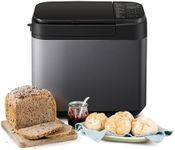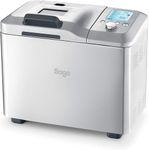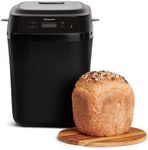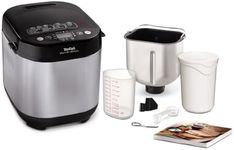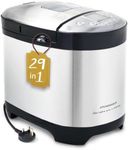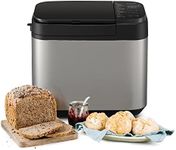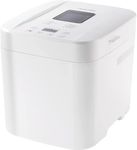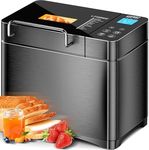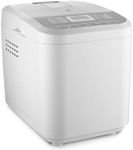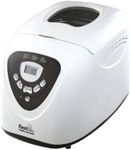Buying Guide for the Best Breadmakers
Choosing the right breadmaker can make a big difference in your baking experience. A breadmaker is a convenient appliance that allows you to make fresh bread at home with minimal effort. When selecting a breadmaker, it's important to consider various features and specifications to ensure it meets your needs and preferences. Here are some key specs to look out for and how to navigate them.Loaf SizeLoaf size refers to the amount of bread the machine can produce in one baking cycle. This is important because it determines how much bread you can make at once. Breadmakers typically offer different loaf sizes, such as 1 lb, 1.5 lbs, 2 lbs, and even 2.5 lbs. If you have a small household or don't eat a lot of bread, a smaller loaf size might be sufficient. For larger families or if you consume a lot of bread, a larger loaf size would be more appropriate.
Programs and SettingsPrograms and settings refer to the pre-set options available on the breadmaker for different types of bread and baking processes. This is important because it provides versatility and convenience. Common programs include basic white bread, whole wheat, gluten-free, and dough settings. Some advanced models may offer additional settings like jam, cake, and artisan bread. Consider what types of bread you plan to make and choose a breadmaker with the appropriate programs to match your baking needs.
Crust ControlCrust control allows you to choose the desired crust color and texture, such as light, medium, or dark. This is important for achieving the perfect crust to suit your taste preferences. If you like a softer crust, you might prefer a light setting, while those who enjoy a crunchier crust might opt for a dark setting. Look for a breadmaker that offers multiple crust control options to give you flexibility in your baking.
Delay TimerA delay timer allows you to set the breadmaker to start baking at a later time. This is important for convenience, as it lets you have fresh bread ready when you want it, such as in the morning or when you come home from work. Delay timers can typically be set for up to 13-15 hours in advance. If you have a busy schedule and want to enjoy fresh bread at specific times, a breadmaker with a delay timer feature would be beneficial.
Kneading PaddlesKneading paddles are the components that mix and knead the dough inside the breadmaker. This is important because effective kneading is crucial for good bread texture and consistency. Some breadmakers come with a single paddle, while others have dual paddles for more thorough kneading. If you plan to make dense or whole grain breads, dual paddles might be more effective. Consider the types of bread you will be making and choose a breadmaker with the appropriate kneading paddle configuration.
Viewing WindowA viewing window is a transparent section on the lid of the breadmaker that allows you to monitor the baking process without opening the lid. This is important for convenience and ensuring the bread is baking correctly. If you like to keep an eye on your bread as it bakes, look for a breadmaker with a clear and large viewing window.
Non-Stick PanA non-stick pan is the container where the bread is baked, and it has a non-stick coating to prevent the dough from sticking. This is important for easy removal of the bread and for cleaning purposes. If you want a hassle-free baking and cleaning experience, choose a breadmaker with a high-quality non-stick pan.
